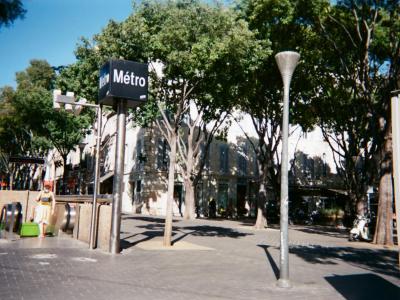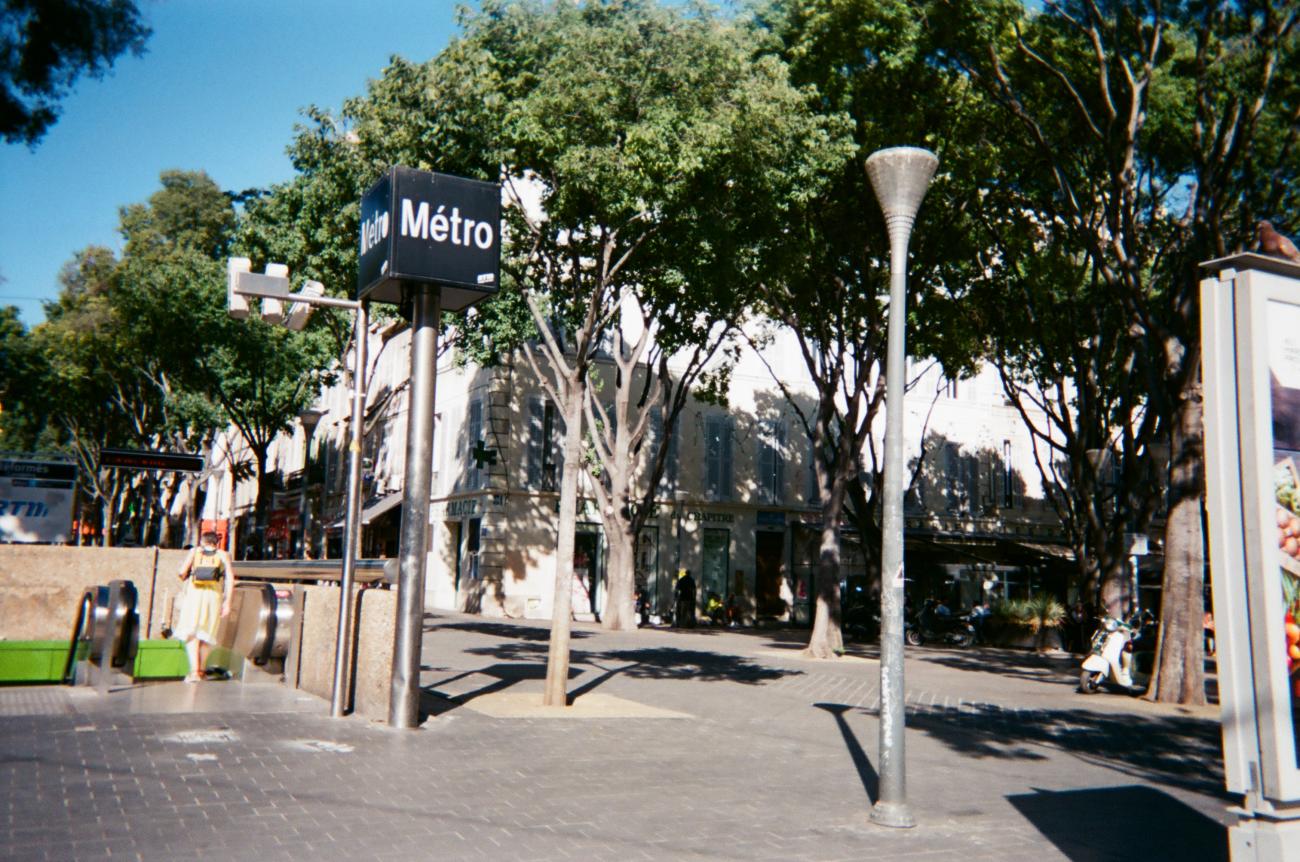
With the proposed opening of a drug consumption room in Marseille, Marie Dos Santos, sociologist at SESSTIM, looks back at the EPOSIM project. This project gives drug users the opportunity to talk about the conditions in which they currently use drugs, by taking photographs.
The plan to open a drug consumption room in Marseille is an idea that has been around since 1995 and is still topical today. It raises expectations among users, but is also met with resistance. Against a backdrop of a lack of understanding of the realities experienced by drug users, a qualitative survey on injecting in the public space and the issues surrounding a low-risk drug consumption room was launched in early 2020 by the SESSTIM (Sciences économiques et sociales de la santé & traitement de l'information médicale) laboratory, in collaboration with the Marseille associations ASUD Mars Say Yeah, Le Tipi and Nouvelle Aube: the EPOSIM project, or Preliminary study on the opening of an supervised injection site in Marseille.
What is a drug consumption room?
A drug consumption room is a place that offers appropriate conditions to encourage safe practices in the presence of medical and social staff, while having access to specific and sterile equipment. It is not a place for dealing, and the products are not supplied on the premises. On arrival, each person must declare what and how much they intend to use. This helps us to better understand usage practices.
The operation of a drug consumption room may involve a variety of protocols adapted to local conditions and patterns of consumption. Most of the time, drug use is by injection, but it can also be by inhalation. This ability to adapt means that we can provide a continuum of support for drug users. When a drug consumption room opened in Paris or Strasbourg in 2016, it was noted that this was a new population that was not being catered for in the other facilities. In Strasbourg, for example, there was a lack of awareness of the number of cocaine injectors. When the centre opened, it welcomed many people who had never been to other types of support structures. This discovery of new target groups led to the creation of specific initiatives aimed at these extremely marginalised people, who previously had nowhere else to turn.
Opening in Marseille to meet specific local needs
There are certain specific features of Marseille that make it necessary to open a drug consumption room. Epidemiological data from COSINUS, an evaluation of low-risk consumption rooms in Paris and Strasbourg, commissioned by the Interministerial Mission for the fight against drugs and addictive behaviour from Inserm in 2021, revealed a high prevalence of injection practices and hepatitis C among drug users. These factors are both a cause for concern and a motivation for those involved in reducing the risks associated with drug use to consider the need to set up such a facility.
Unlike in Geneva, for example, where drug use takes place on an "open stage", i.e. in public places, drug use in Marseille takes place mainly in the interstices of public space (car parks, rubbish bins, between two cars, in public toilets, etc.). People who use drugs may be homeless or may hide their drug use from the people with whom they live, which means that they are obliged to consume in a hurry in the public space. Interviews with people taking part in the EPOSIM project reveal that it is never a choice to consume in the public space, but rather a response to the lack of places that would be more suitable.
Distributing sterile injecting equipment
This practice of injecting in the interstices of the city, sometimes in unsanitary conditions, leads to a paradox between the use of sterile equipment and the conditions of injection. Since 1995, associations in Marseille have been distributing sterile injecting equipment anonymously and free of charge as part of the fight against HIV. This distribution can take place directly with the associations, but also via distributors or even by post. Everything is done to make access easier for the people involved, so that they can use drugs in the best possible conditions.
But this distribution remains paradoxical, since despite the desire to make drug use safer by using sterile equipment, people have nowhere to use drugs in satisfactory hygienic conditions. This is one of the structural injustices suffered by drug users.
Bearing witness using the photo-voice method
The EPOSIM project used the photo-voice methodology, a method frequently used in community-based and participatory research with precarious and vulnerable populations. Taking pictures is a means of research that is accessible to participants and complements the spoken word. The contributors are actively involved in creating the data and sharing it within their communities to raise awareness.
During the first workshop, participants are given cameras and given advice on how to use them and take photos by a photographer (flash, framing, etc.). They are also encouraged to think about photography anonymously, safely and ethically, so as not to put themselves in danger or be recognised. They then leave with the camera and do not return to the researchers until several weeks or even months later, when the film is full. The researcher then takes charge of developing the photos, which each participant discovers and tells her about in an interview. In the final stage, all the photos taken are pooled together and discussed by the group. The collective analysis can lead to the preparation of an exhibition or the publication of a dossier in a magazine. The community aspect of the project is further enhanced by collective workshops.
More than just a photo on display, each picture tells a story, a message that the participant wants to get across. Take, for example, a photo showing the Place des Réformés, a three-minute walk from where there has been talk of opening a drug consumption room in Marseille.
The photographer says that you can see the trams, the passers-by, and the cars, but nobody sees the people who are injecting. As if they didn't exist. This lack of knowledge on the part of local residents is one of the reasons for their opposition to the project, since they don't see these practices in their neighbourhoods.
A project to raise awareness, but change is still a long way off
Law n° 70-1320 of 31 December 1970, which punishes drug use in France, has helped to create conditions of violence and great insecurity for drug users. Despite innovative initiatives and methodologies, participatory research and the strong network of associations that enable communication between researchers and participants, the legislation is still unfavourable to drug users. Even though science has already demonstrated the effectiveness of risk reduction. For example, the rate of HIV infection among drug users in the 80s and 90s was very high. Following the introduction of the needle exchange programme, this is now recognised as one of the most effective public health measures.
We are aware that changes are slow, and that they are not solely linked to advances in research. So it's impossible to guarantee that taking part in this project will revolutionise the way people consume. However, by using photography as a creative tool, they have the opportunity to raise public awareness, while at the same time initiating a process of reflection on their own consumption practices, conditions and the weight of society's viewpoint... Photo-voice does not change the world, but the creative process remains emancipating.
Reference: Dos Santos M, Girard G, Briand Madrid L, Perreaut L, Olenine A, Roux P. "The Slums Have To Be Shown": Documenting Drug Injection in Public Spaces Ahead of the Opening of a Drug Consumption Room in Marseille. Qualitative Health Research. 2023;33(8-9):727-740.
Article published March 12, 2024.











